Role of the role in the people

Among all the acts stands out, however, one that has aroused special attention. This is the exhibition installed at the Tolosa Fair. And in it, among other things, we have been able to see working the machine that manufactures new paper with pieces of recovered paper.
This machine, manufactured in 1993 by the Catalan company Basagoitia for the company Alier S.A., is very similar to that of the bins, but that is, of smaller size, that can be transferred from one to the other. The objective of this 14-metre long, 8-metre wide and 50-tonne machine is informative and is mainly used to show the public how paper is made.
On April 20, the students of the Technical Engineering of the Paper of Tolosa launched the machine and on May 24 stopped playing paper.
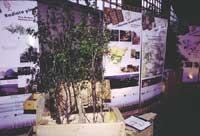
For the manufacture of the paper, first the old paper used in the pulper is broken and then the crushed pieces pass to the scrubber where wires, stones, staples, etc. are removed. Once we have the pasta clean, the grammage will graduate, that is, we decide how much we want the square meters to weigh. This paste goes to a tresca and there the sheet of paper will be made. Finally the paper dries and is collected in coils.
This machine, for many toys, has attracted many people, since in Tolosaldea there are many people who have worked in the bins and has aroused a special interest. In addition to these, a large number of students have approached, with a high demand from schools, estimated at about 4,000 students.
However, in addition to the paper machine, the exhibition had a lot to do. We have also seen explanatory panels on the history of paper. Below are the tools and raw materials used for the manufacture of artisanal paper.
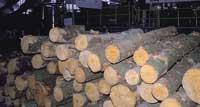
XIX. In the twentieth century there were also the machines and tools used, in the exhibition and in the printing press of the time.
Also installed in the Fair of Tolosa attractive panels that summarize the technological and social development of the municipality during this century, “Tolosa XX. under the title “Durante el siglo” and made by Eusko Ikaskuntza. Finally, in the exhibition you could find a wide variety of products that are manufactured with paper and cardboard, which has allowed us to show that the paper reaches any area of society.
We have tried to tell what we have seen. Everyone who has approached the place has seen that they have explained it in Braille for the blind.
Industrial maintenance
Since Martín Olano installed the first Gipuzkoa bin in the Molino de Igarondo in 1817, this activity has conditioned the image and economy of the town and the region. Then came José Joaquín de Mendia, to the Mill of Otsarain, and according to Pascual Madoz (Diccionario Geográfico-Histórico de España, 1847) these factories created a job for 12 men and produced 4,000 “resmas” papers by hand.
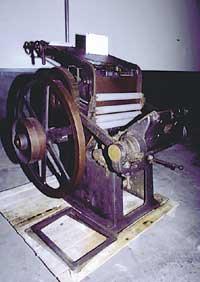
In 1842 the first continuous paper machine was launched at the “La Esperanza” factory and the factories of Txarama and Igarondo arrived on the same road. XIX. In the eighteenth century the factories of Irura “Echezarreta”, Alegia “Providencia”, Amaroz, Olarrain, Berrobi and Billabona saw the light, leaving the manual work system obsolete.
Since the beginning of this century many incidents have occurred, the crisis provoked the creation of the Spanish Trash. The market was reorganized and its diffusion made in Tolosa and surrounding areas there were 19 bins.
At present this figure has been reduced, but the role remains very important in Tolosaldea. In addition to manipulated paper and graphic arts, the metallurgical industry of construction and repair of paper machinery is perhaps the most concentrated in the world in Toulouse.
2,000 years of history
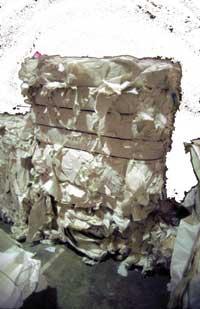
The 16 panels of this exhibition show the “role” that has played the role in the development of our civilization. When man wanted to communicate images and writings, the need for support arose. The paper was an easy support to get and stack, on the one hand it was cheap and also it was quite durable. He therefore favored all the advantages for his development and evolution.
In the history of paper you can cite five important dates: a.C. Although a scrub of the year 98 is known, the first citation of the paper is in C. C. It dates from year 105. The Chinese were the first producers of paper and this new material was cheap and durable, so it was gradually replacing the papyrus and parchment.
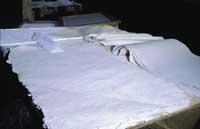
The second important date is 751. In fact, after the battle of Samarkand, it became known how the Chinese made the role. It was a secret they kept for six centuries, but in this battle the Arabs took some papermakers to impersonate prisoners and the secret of paper.
The third important moment in the history of paper has been the dissemination of paper throughout Europe. Through Arab cultures he came to Spain and from there to all of Europe. The starting date of paper manufacturing in the Iberian Peninsula is unknown, but it is believed that it was in the late 10th century or early 11th century.
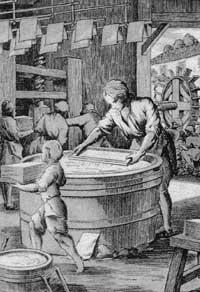
The fourth decisive date was the creation of the printing press, based on paper, which allowed obtaining a cheap and abundant paper that facilitated the development of the printing press.
After the French Revolution, the demand for paper continued to grow. Much of this demand came from the large encyclopedias that were published in France (Encyclopedie 1751-1772), and later was the creation of some European newspapers, such as The Times or Diario de Barcelona, founded in 1785, in 1792. In this context, in 1798, the first continuous paper machine emerged, which will undoubtedly be the fifth great moment in the history of paper.
Buletina
Bidali zure helbide elektronikoa eta jaso asteroko buletina zure sarrera-ontzian











